Korean braised radish or ‘mu jorim’ is soft and tender radish that’s braised in a spicy, sweet, and savory sauce – a perfect combination of flavors that’s delicious with a bowl of rice.
While this dish is usually served as a side dish, I think it’s perfect as a main dish, especially when you’re craving something easy, healthy, and spicy.
I consider this a ‘rice thief’ or ‘bap doduk‘ [밥도둑] which is a term used to refer to dishes that are so flavorful, you’ll need to eat more rice than you usually do! This spicy Korean braised radish is so good that it’s in line with my ikura don and soy marinated raw crab recipes.
Why you’ll love this recipe
This Korean braised radish is so easy to make, and it’s beginner-friendly too! It’s a great introduction to easy Korean vegetable dishes. Braising is simply slow cooking in a low amount of liquid and this process slowly tenderizes the radish while soaking in all the flavors of the braising liquid. The result is a super flavorful dish, packed with savory and umami flavors as if it came right from a restaurant! It’s so delicious that no one can tell that it takes little effort to prepare.
As mentioned above, this Korean braised radish is good as ‘banchan’ (side dish) or as a main. You can even serve it alongside cold soba noodles or marinated raw shrimp for a refreshing and hearty meal!
Best of all, you can make a big batch and store it for up to 4 days. This can be enjoyed cold or hot – it’s all about preference! Reheat in the microwave until warm through then top it on rice, and you’ll have yourself a delicious meal ready in no time.

Korean Braised Radish Ingredients & Substitutions
Korean radish — Since this dish requires low and slow cooking, Korean radish is best because it holds its shape and texture better than other varieties. But if you can’t find it, daikon radish is a good alternative. You might just want to cook it for a shorter period as it gets soft and tender faster.
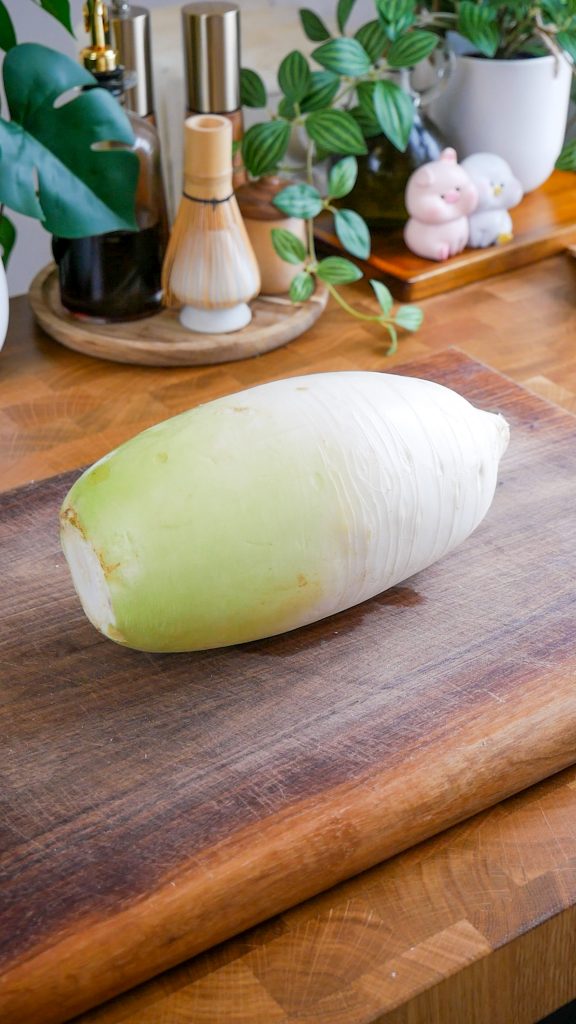
Water — Water is used in the braising liquid
Scallion — Also known as green onions. Separate the white and green parts of the scallions. The white part is for cooking, while the green part is for garnish. For substitutions, you can use leeks, but only the white part for cooking, and chopped chives for garnish.
Chili pepper — For added heat! It also makes the overall look of the dish stand out with its vibrant color. Feel free to use any type of chili pepper you want – I used red holland finger peppers but you can substitute it with jalapeno, serrano, or even Thai chili peppers.
Sesame oil — Adds a nutty aroma to the dish. It is essential, as it ties the flavors together at the end.
Sesame seeds — To enhance the sesame oil’s flavor and add some crunch, I like to add sesame seeds. It provides a mild sweet and nutty aroma to the dish.
Sauce
Minced garlic — Feel free to add more but not less!
Sugar — To balance out all the strong savory flavors. You can use white or brown sugar.
Fine gochugaru — Added for that authentic Korean spice and beautiful red color. If using coarse gochugaru, add one-half of the required amount.
Dashida (Korean beef bouillon) — It’s basically instant beef soup stock made mainly with components of beef, anchovies, vegetables, and aromatics. Added for an extra flavor boost! This can be substituted with chicken bouillon, mushroom bouillon, or even MSG
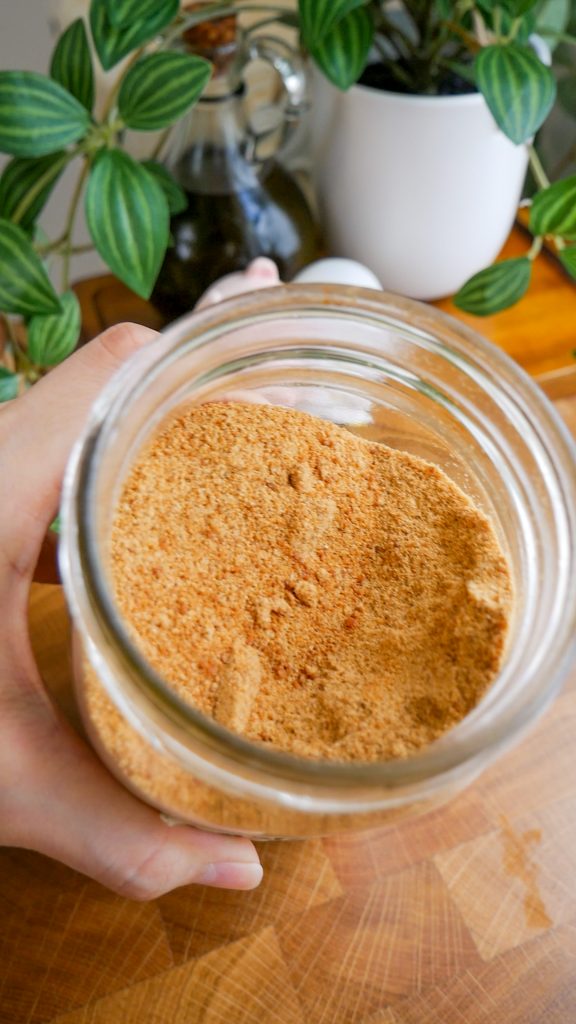
Mirin — Also known as sweet rice wine, it is a fermented condiment that adds a sweet and tangy flavor to this dish. If you don’t have it on hand, you can substitute mirin with sake or skip it!
Soy sauce — Adds saltiness, umami, and deepens the flavor of the dish. For the recipe, you want to use a good Korean soy sauce – my favorite brand is Sempio.
Fish sauce — Adds a kick of salty pungent deliciousness that I love! For extra pungent and savoriness, I like to add fish sauce to complement the soy sauce. I recommend using anchovy fish sauce for this.
How to Prepare Korean Braised Radish
Step 1: Prepare the sauce
Combine minced garlic, sugar, fine gochugaru, dashida, mirin, soy sauce and fish sauce. Mix until thoroughly combined then set aside.
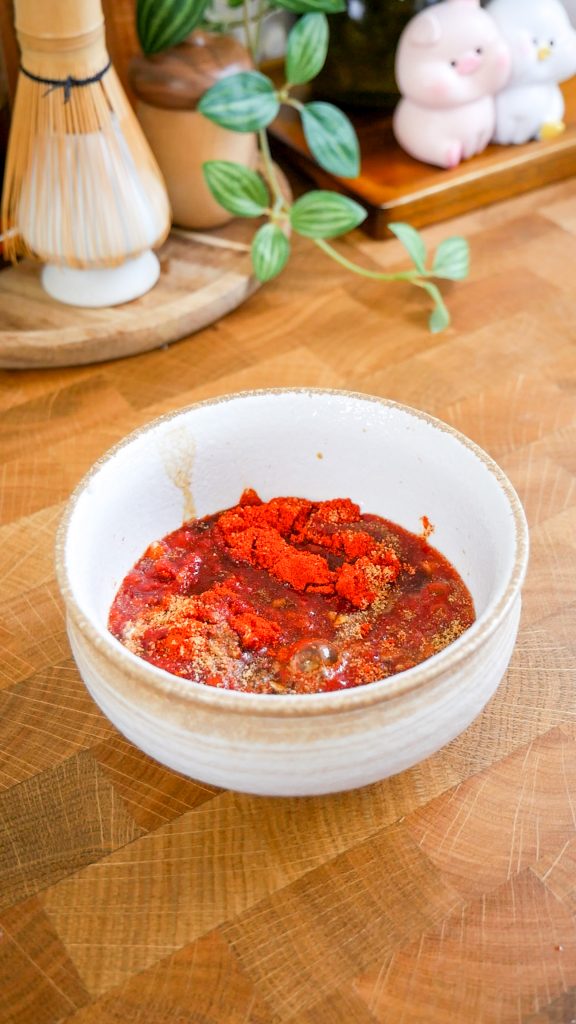
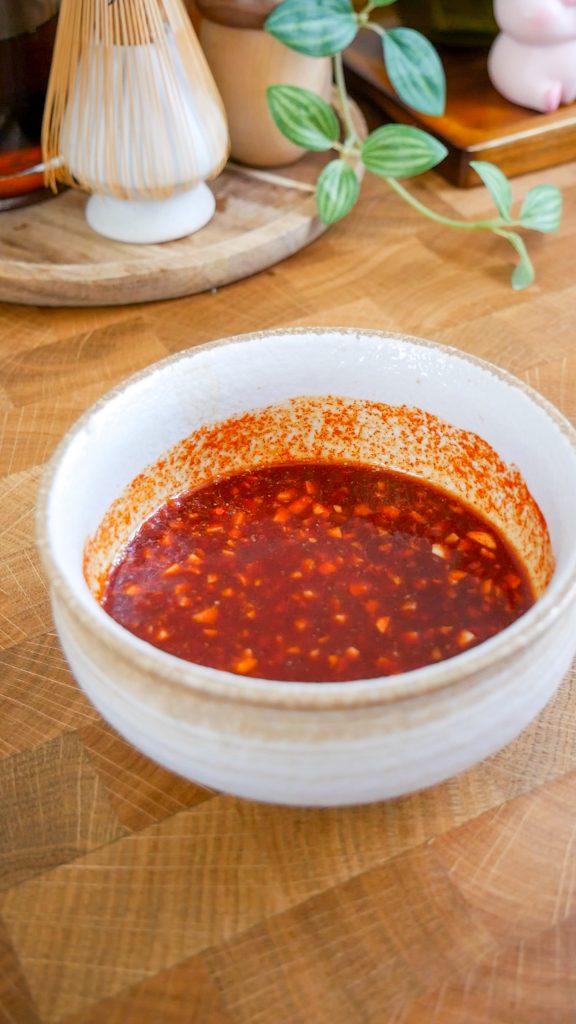
Step 2: Prepare the radish
Wash and peel the radish. Slice into 1-inch disks. You can cut them in half or use cookie cutters to mold them into uniformly sized disks like I did.
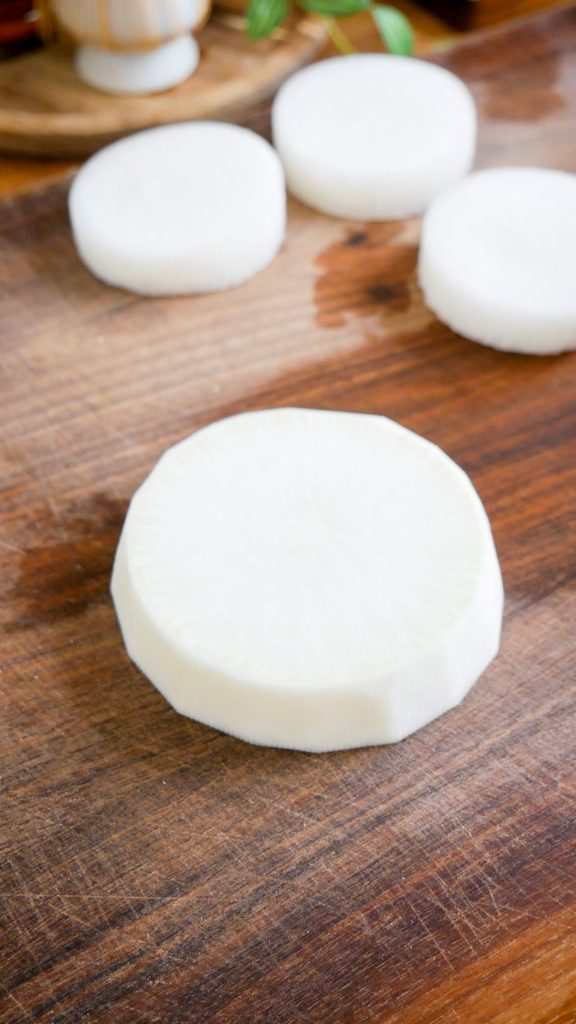

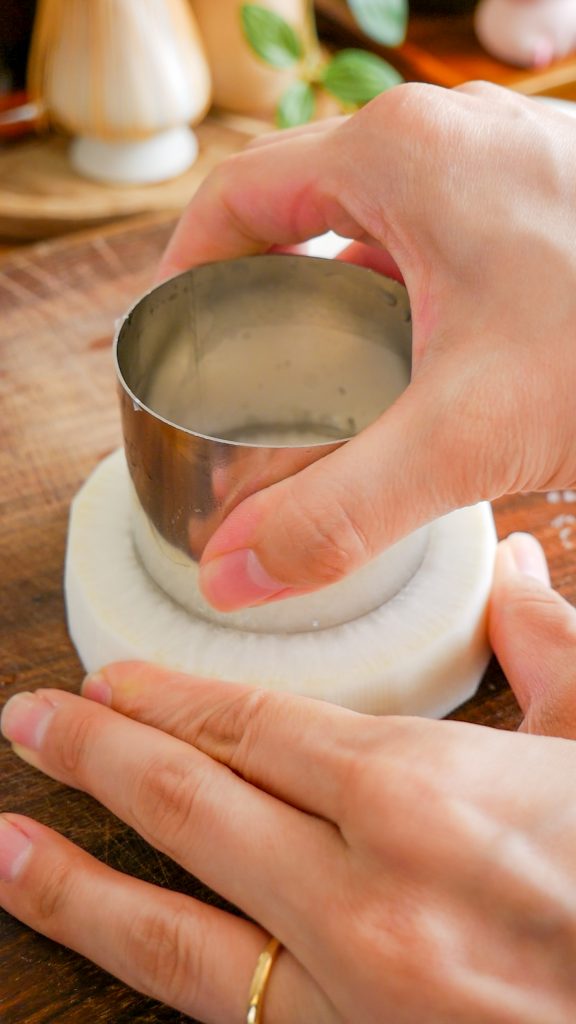
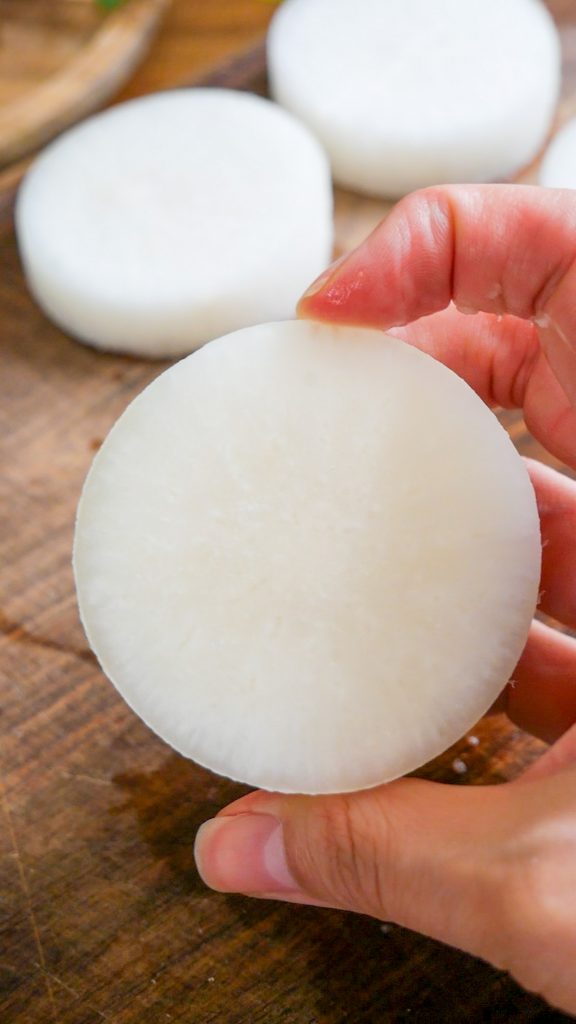
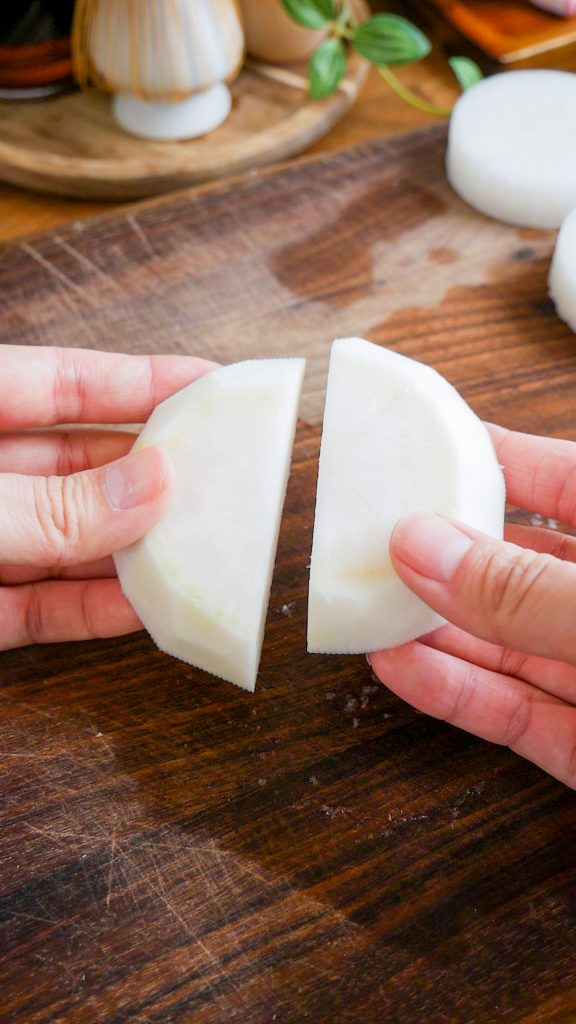
Step 3: Arrange radish in pan
Transfer the radishes into a pan, making sure they are arranged in one layer.

Step 4: Simmer the radish
Pour in the water and add the sauce from earlier. Cover and simmer for 20 minutes over medium-low heat.
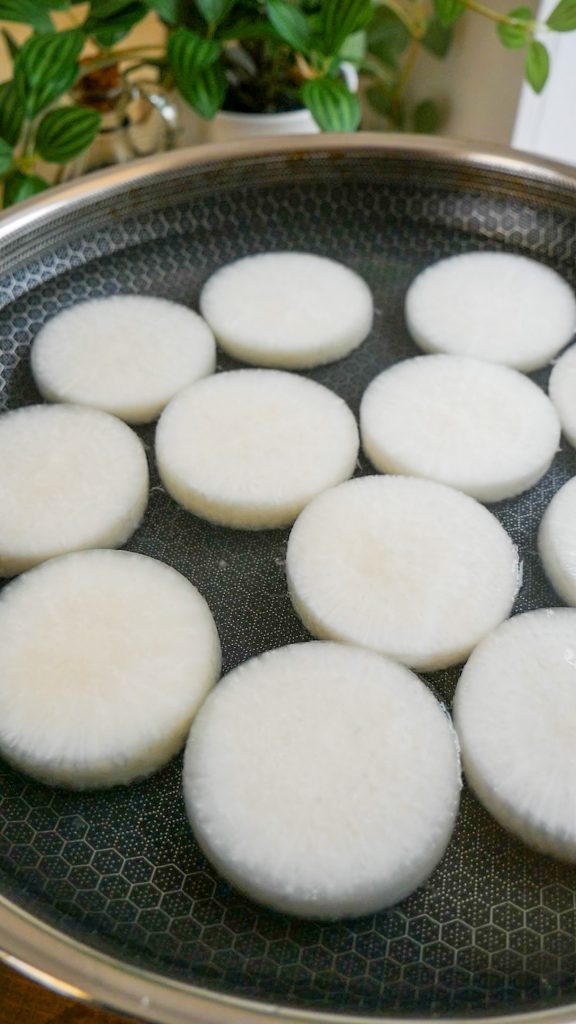
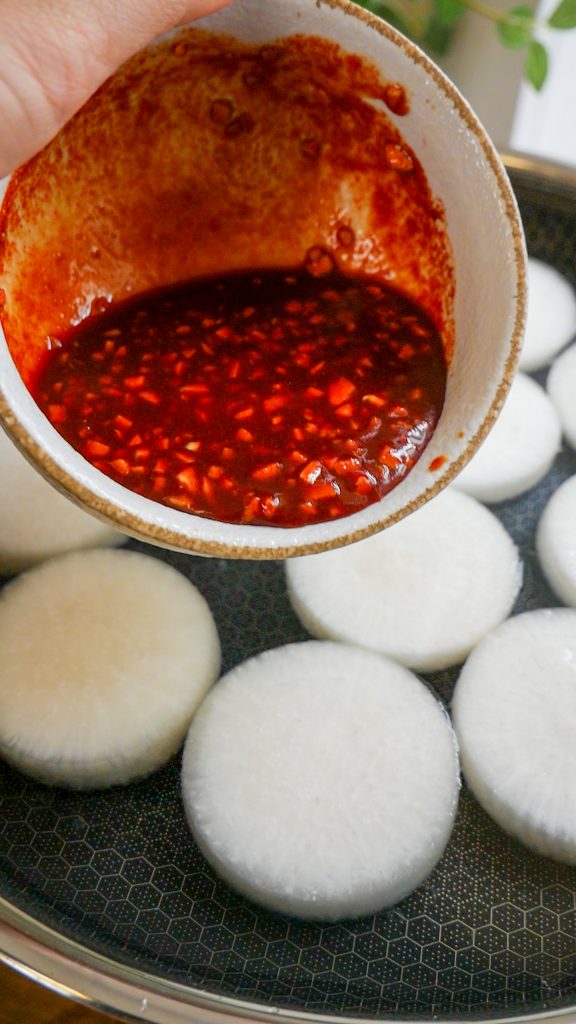
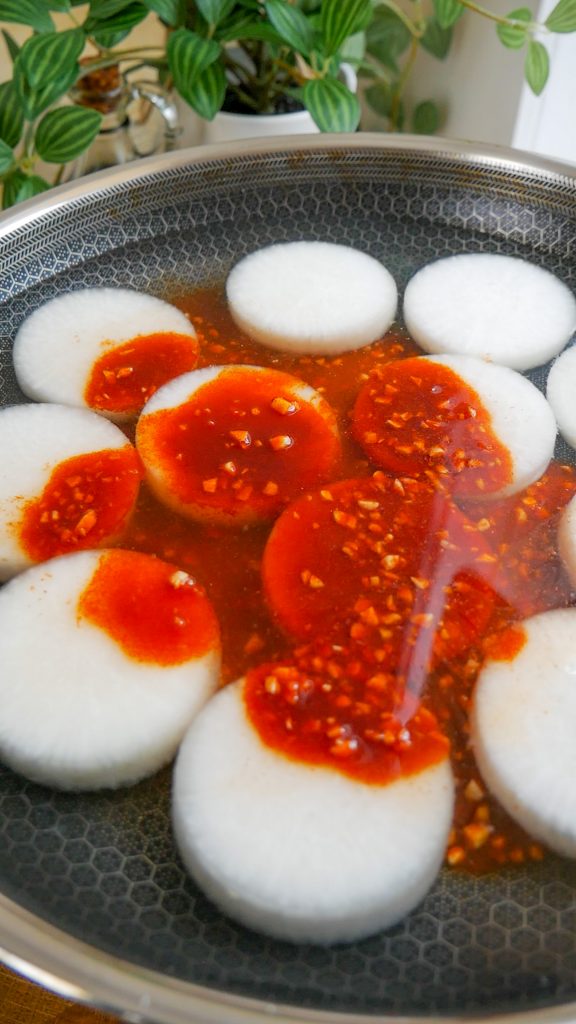
Step 5: Add aromatics
After 20 minutes, flip the radishes then add the white part of the scallions, sliced peppers, and sesame oil. Cover and simmer for 15 minutes or until the braising liquid has thickened up.
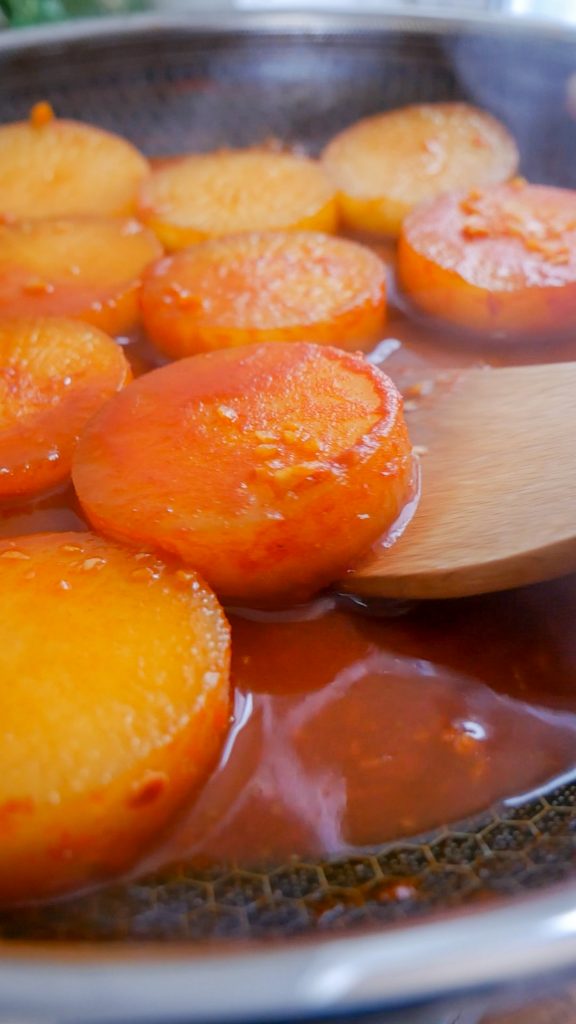
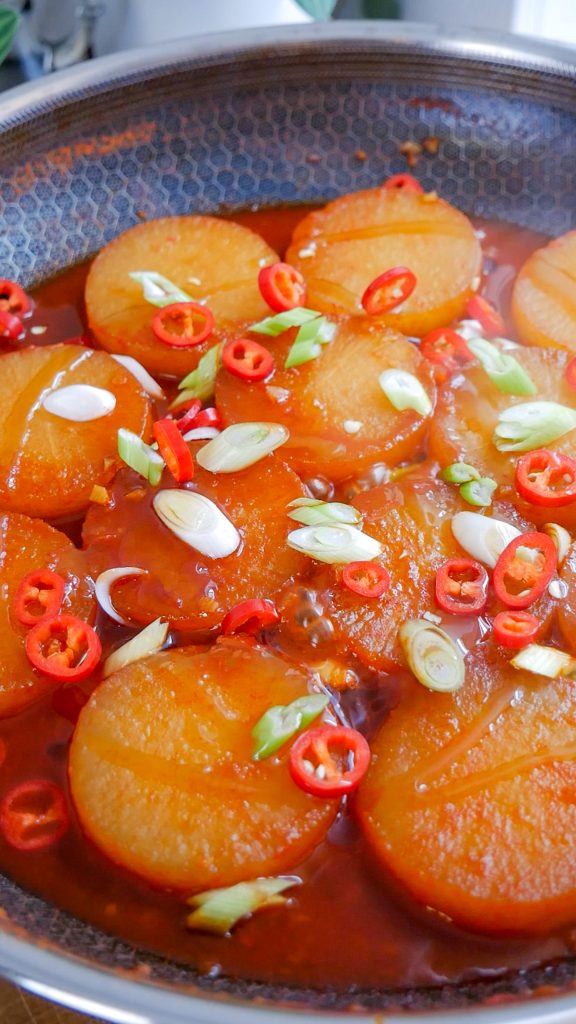
Step 6: Garnish and serve
To serve, garnish with sesame seeds and the green part of the scallions. Enjoy!
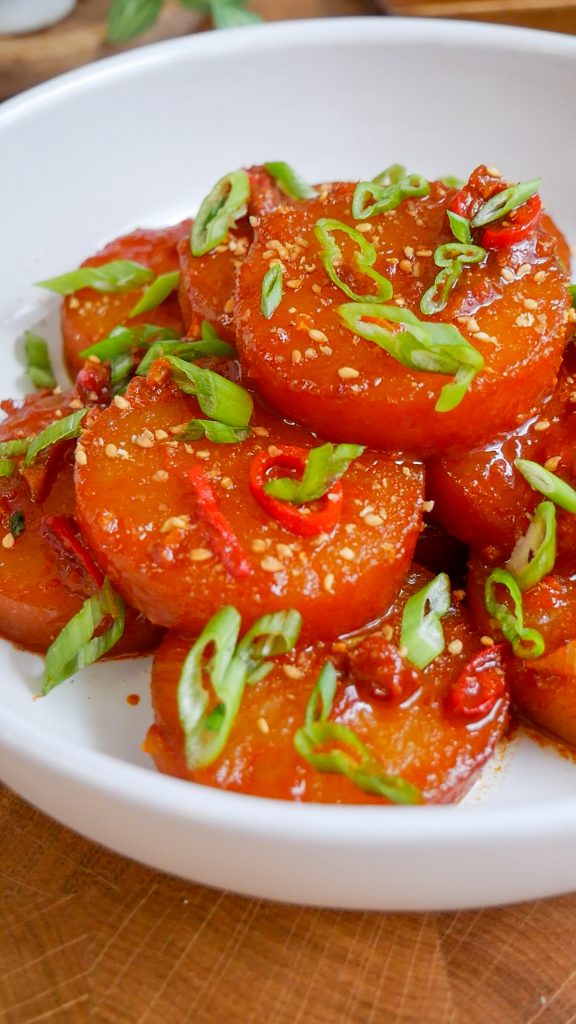
Preparation Tips for Korean Braised Radish
- You want to cut the radishes quite thick, about 1-inch, so that they retain their shape throughout the cooking. You can do disks, half-moons, and even wedges. You also want them to be in uniform sizes so that they all cook evenly at the same time. They will also look pretty on a plate that way!
- While you can use any type of pan, I recommend using a heavy bottom pan with a wide opening or cast iron skillet. These types of pots distribute heat evenly for even cooking.
- It’s important to arrange them in one layer, making sure they’re not overlapping to ensure even cooking.
- If the braising liquid has evaporated but the radish isn’t fully tender, add ¼ cup of water at a time. You can also add more water if it’s too salty.
Frequently Asked Questions
What is a Korean radish called?
“Mu” is the term for Korean radish. Mu radish is of the white radish family. It is usually shorter and wider than other varieties of radish like daikon, which is thin and long.
What do you eat Korean radishes with?
My favorite way to serve Korean braised radish on top of a big bowl of freshly cooked white rice! This dish is quite savory, so you’ll definitely need extra rice with it! You can also serve it as a side dish or ‘banchan’ with other Korean main dishes like seafood soondubu or beef dolsot bibimbap.
Is Korean radish the same as daikon?
Korean mu radish and Daikon are similar and are in fact, interchangeable in most recipes. However, they each carry their own unique flavors. Daikon radish is slightly sweet and mild, with very light peppery notes. On the other hand, Korean radish has a more peppery flavor and is lighter on the sweetness. The peppery flavor is mellowed down by cooking.
Is Korean radish healthy?
Yes, Korean radish holds a host of health benefits! Aside from being low in calories and high in fiber, which makes you feel full, it is rich in antioxidants and vitamin C. It is shown to improve digestion, and skin health, and boost the immune system. Generally, radish is a great addition to any diet!
Do you peel Korean radish?
Yes! I like peeling my radishes to get rid of the thick fiber in their skin. It also allows the flavors to soak in more!
Can I eat Korean radish raw?
Yes, Korean radish can be eaten raw. Serve it as a salad by cutting it into matchsticks. For a simple dressing, combine fish sauce, vinegar, garlic, gochugaru, and sesame oil. And voila, you just made yourself a light and refreshing Korean radish salad! I like having it as a midday snack or appetizer!
Looking for more easy and delicious Korean vegetable recipes?
- Korean Cucumber Kimchi — Prepare this ‘banchan’ or side dish with no cooking involved. It’s light, refreshing, super crisp, and crunchy, and perfect to have with any meal. But since it is less salty than regular kimchi, you can also eat it on its own as a snack!
- Geotjeori Kimchi — A deliciously refreshing fresh cabbage kimchi that comes together in less than half the time of regular kimchi! You can serve and eat it right away, no need to wait.
- Korean Vegetable Pancakes — Crispy and crunchy on the outside, soft and tender on the inside, and filled with nutritious vegetables—this is what this savory pancake is all about! It’s perfect with my savory Korean pancake dipping sauce.
- Potato Cheese Pancakes with Roasted Garlic — Here’s a spin on the viral Tiktok snack. A medley of potatoes, garlic, and gooey cheese that you’ll surely love!
- Korean Curry Rice Recipe — Serve yourself a warm and comforting bowl of curry rice in just 20 minutes! Perfect for chilly days or on a busy weeknight.

Korean Braised Radish Recipe – (무조림) Mu Jorim
Ingredients
- 1 lb Korean radish substitute with daikon radish
- 2 1/2 cups water
- 1 chopped scallion white and green parts separated
- 1 sliced chili pepper
- 1 tsp sesame oil
- 1/2 tsp sesame seeds
Sauce
- 3 minced garlic cloves about 1 tablespoon
- 1/2 tbsp sugar
- 1 tbsp fine gochugaru substitute with 1 1/2 tbsp coarse gochugaru, adjust to taste
- 1 tsp dashida (Korean beef bouillon) substitute with chicken bouillon, dashi powder, or mushroom bouillon
- 2 tbsp mirin
- 2 tbsp soy sauce
- 1 tbsp fish sauce
Instructions
- Start by preparing the sauce. Combine minced garlic, sugar, fine gochugaru, dashida, mirin, soy sauce and fish sauce. Mix until thoroughly combined then set aside for later.
- Wash and peel the radish. Slice into 1-inch disks then cut in half. You can cut them in half or use cookie cutters to mold them into uniformly sized disks like I did.
- Transfer the radish into a pan, making sure they are arranged in one layer.
- Pour in the water and add the sauce from earlier. Cover and simmer for 20 minutes over medium-low heat.
- After 20 minutes, flip the radishes then add the white part of the scallions, sliced peppers, and sesame oil. Cover and simmer for 15 minutes or until the braising liquid has thickened up.
- To serve, garnish with sesame seeds and green part of the scallions. Enjoy!